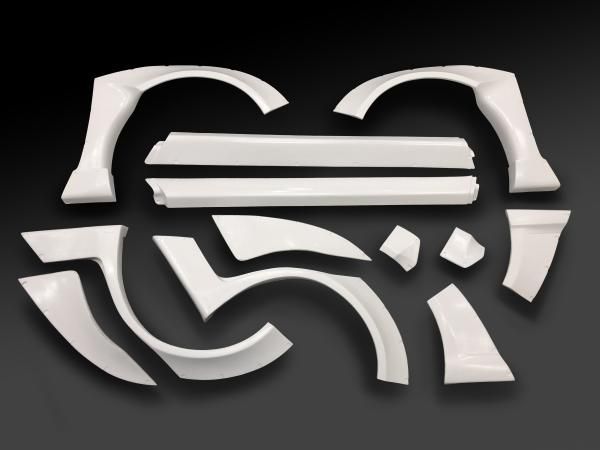Back pain and associated disorders are a common group of conditions that are frequently encountered in clinical physical therapy practice. There are many different types of spine disorders, including degenerative disc disease, herniated discs, spinal stenosis, and spondylolisthesis, among others.
ICD-10 codes for back pain typically fall under the M-series codes, which refer to diseases and disorders of the musculoskeletal system and connective tissue. We have compiled a list of many of the most commonly seen cervical spine disorders and lumbar spine disorders as well as a quick reference guide to the ICD-10 codes utilized for these conditions.

Scoliosis
Scoliosis is a condition that causes an abnormal curvature of the spine, which can lead to pain, difficulty breathing, and other health problems. Diagnosis of scoliosis typically involves a physical exam and imaging tests such as X-rays, CT scans, or MRI.
Treatment for scoliosis depends on the severity of the curvature, the age of the patient, and other factors. Mild cases may require only monitoring and regular check-ups with a doctor, while more severe cases may require bracing or surgery.
Physical therapy can also play an important role in the treatment of scoliosis. A physical therapist can develop an exercise program that is tailored to the individual patient's needs and can help improve posture, strengthen the muscles in the back and abdomen, and increase flexibility.
The specific exercises prescribed by a physical therapist may vary depending on the severity and location of the curvature. For example, patients with a thoracic (upper back) curve may benefit from exercises that focus on expanding the chest and strengthening the muscles around the shoulders, while patients with a lumbar (lower back) curve may need exercises that focus on strengthening the lower back muscles and improving flexibility in the hips.
ICD-10 Codes related to scoliosis:
M41.00 Infantile idiopathic scoliosis, site unspecified
M41.02 Infantile idiopathic scoliosis, cervical region
M41.03 Infantile idiopathic scoliosis, cervicothoracic region
M41.04 Infantile idiopathic scoliosis, thoracic region
M41.05 Infantile idiopathic scoliosis, thoracolumbar region
M41.06 Infantile idiopathic scoliosis, lumbar region
M41.07 Infantile idiopathic scoliosis, lumbosacral region
M41.08 Infantile idiopathic scoliosis, sacral and sacrococcygeal region
M41.112 Juvenile idiopathic scoliosis, cervical region
M41.113 Juvenile idiopathic scoliosis, cervicothoracic region
M41.114 Juvenile idiopathic scoliosis, thoracic region
M41.115 Juvenile idiopathic scoliosis, thoracolumbar region
M41.116 Juvenile idiopathic scoliosis, lumbar region
M41.117 Juvenile idiopathic scoliosis, lumbosacral region
M41.119 Juvenile idiopathic scoliosis, site unspecified
M41.122 Adolescent idiopathic scoliosis, cervical region
M41.123 Adolescent idiopathic scoliosis, cervicothoracic region
M41.124 Adolescent idiopathic scoliosis, thoracic region
M41.125 Adolescent idiopathic scoliosis, thoracolumbar region
M41.126 Adolescent idiopathic scoliosis, lumbar region
M41.127 Adolescent idiopathic scoliosis, lumbosacral region
M41.129 Adolescent idiopathic scoliosis, site unspecified
M41.20 Other idiopathic scoliosis, site unspecified
M41.22 Other idiopathic scoliosis, cervical region
M41.23 Other idiopathic scoliosis, cervicothoracic region
M41.24 Other idiopathic scoliosis, thoracic region
M41.25 Other idiopathic scoliosis, thoracolumbar region
M41.26 Other idiopathic scoliosis, lumbar region
M41.27 Other idiopathic scoliosis, lumbosacral region
M41.30 Thoracogenic scoliosis, site unspecified
M41.34 Thoracogenic scoliosis, thoracic region
M41.35 Thoracogenic scoliosis, thoracolumbar region
M41.40 Neuromuscular scoliosis, site unspecified
M41.41 Neuromuscular scoliosis, occipito-atlanto-axial region
M41.42 Neuromuscular scoliosis, cervical region
M41.43 Neuromuscular scoliosis, cervicothoracic region
M41.44 Neuromuscular scoliosis, thoracic region
M41.45 Neuromuscular scoliosis, thoracolumbar region
M41.46 Neuromuscular scoliosis, lumbar region
M41.47 Neuromuscular scoliosis, lumbosacral region
M41.50 Other secondary scoliosis, site unspecified
M41.52 Other secondary scoliosis, cervical region
M41.53 Other secondary scoliosis, cervicothoracic region
M41.54 Other secondary scoliosis, thoracic region
M41.55 Other secondary scoliosis, thoracolumbar region
M41.56 Other secondary scoliosis, lumbar region
M41.57 Other secondary scoliosis, lumbosacral region
M41.80 Other forms of scoliosis, site unspecified
M41.82 Other forms of scoliosis, cervical region
M41.83 Other forms of scoliosis, cervicothoracic region
M41.84 Other forms of scoliosis, thoracic region
M41.85 Other forms of scoliosis, thoracolumbar region
M41.86 Other forms of scoliosis, lumbar region
M41.87 Other forms of scoliosis, lumbosacral region
M41.9 Scoliosis, unspecified
Whiplash
Whiplash is a type of neck injury that occurs when the neck is suddenly jerked back and forth, causing damage to the soft tissues of the neck. It commonly occurs in car accidents, but it can also happen during sports activities, falls, and other types of trauma.
Symptoms of whiplash may include neck pain, stiffness, headaches, dizziness, and sometimes, numbness or tingling in the arms. The severity of whiplash can vary from mild to severe, and recovery time can range from a few weeks to several months.
Physical therapy is one of the most effective treatments for whiplash. It can help to reduce pain, restore range of motion, and improve strength and flexibility in the neck muscles. A physical therapist can create a customized treatment plan based on the severity of your injury and your specific needs.
Physical therapy for whiplash may include:
Range of motion exercises: These exercises involve gentle stretching to help restore normal neck movement.
Strengthening exercises: These exercises focus on strengthening the muscles in the neck to improve stability and prevent future injuries.
Posture training: Proper posture can help to reduce strain on the neck and prevent further injury.
Manual therapy: This may include massage, mobilization, or manipulation techniques to help reduce pain and stiffness in the neck.
Heat or ice therapy: These therapies can help to reduce pain and inflammation in the neck
Some ICD-10 Codes pertaining to Whiplash are:
S13.4XXA Sprain of ligaments of cervical spine, initial encounter
S13.4XXD Sprain of ligaments of cervical spine, subsequent encounter
S13.4XXS Sprain of ligaments of cervical spine, sequela
S14.2XXA Injury of nerve root of cervical spine, initial encounter
S14.2XXD Injury of nerve root of cervical spine, subsequent encounter
S14.2XXS Injury of nerve root of cervical spine, sequela
S14.3XXA Injury of brachial plexus, initial encounter
S14.3XXD Injury of brachial plexus, subsequent encounter
S14.3XXS Injury of brachial plexus, sequela
S16.1XXA Strain of muscle, fascia and tendon at neck level, initial encounter
S16.1XXA Strain of muscle, fascia and tendon at neck level, subsequent encounter
S16.1XXA Strain of muscle, fascia and tendon at neck level, sequela
Spondylolisthesis
Spondylolisthesis is a condition in which one vertebra in the spine slips forward or backward in relation to the vertebrae below or above it. This can occur anywhere in the spine, but most commonly affects the lower back or lumbar region. Spondylolisthesis can be caused by a variety of factors, including a congenital defect, a traumatic injury, or degenerative changes in the spine due to aging.
Physical therapy is often used to treat spondylolisthesis, particularly in cases where the condition is mild to moderate. The goals of physical therapy for spondylolisthesis are to improve spinal stability, alleviate pain, and improve mobility and function. Treatment may include:
Strengthening exercises: Physical therapy exercises that focus on strengthening the muscles of the core, lower back, and hips can help to stabilize the spine and reduce the risk of further slippage. Examples of exercises that may be prescribed include pelvic tilts, bridges, and single-leg squats.
Flexibility exercises: Tight muscles in the hips, hamstrings, and lower back can contribute to spondylolisthesis. Physical therapy exercises that stretch these muscles can help to reduce pain and improve mobility. Examples of exercises that may be prescribed include hamstring stretches, hip flexor stretches, and spinal twists.
Postural training: Poor posture can contribute to spondylolisthesis by placing additional stress on the spine. Physical therapists can provide guidance on proper posture and body mechanics during daily activities to reduce strain on the spine.
Manual therapy: Physical therapists may use hands-on techniques such as massage or spinal mobilization to relieve pain and improve mobility in the affected area.
Education: Physical therapists can provide education on lifestyle modifications and ergonomic adjustments to reduce pain and prevent further slippage of the affected vertebra.
It's important to note that the type and extent of physical therapy for spondylolisthesis will vary depending on the individual case and severity of the condition. A qualified physical therapist can work with you to develop a personalized treatment plan that addresses your specific needs and goals.
ICD-10 codes for Spondylolisthesis:
M43.10 Spondylolisthesis, site unspecified
M43.11 Spondylolisthesis, occipito-atlanto-axial region
M43.12 Spondylolisthesis, cervical region
M43.13 Spondylolisthesis, cervicothoracic region
M43.14 Spondylolisthesis, thoracic region
M43.15 Spondylolisthesis, thoracolumbar region
M43.16 Spondylolisthesis, lumbar region
M43.17 Spondylolisthesis, lumbosacral region
M43.18 Spondylolisthesis, sacral and sacrococcygeal region
M43.19 Spondylolisthesis, multiple sites in spine
Disc herniations
Disc herniation is a condition that occurs when the gel-like center of a spinal disc ruptures through a weak area in the outer layer, or annulus fibrosus, and puts pressure on nearby nerves or the spinal cord. This can lead to symptoms such as pain, numbness, tingling, and weakness in the affected area.
Physical therapy can be an effective treatment for disc herniations. Here are some common techniques that a physical therapist may use:
McKenzie Method: This approach involves assessing the location and direction of the disc herniation and using specific exercises to centralize or move the pain away from the extremities towards the spine. This can help reduce pressure on the affected nerve root.
Core strengthening exercises: These exercises target the muscles of the trunk and pelvis, including the abdominals, lower back muscles, and glutes, which can help provide stability and support for the spine.
Manual therapy: Techniques such as mobilization and manipulation can be used to improve mobility in the spine and reduce pain.
Modalities: Heat or ice, electrical stimulation, ultrasound or other modalities can be used to reduce pain and inflammation.
Education: A physical therapist may also provide education about proper posture, body mechanics, and ergonomics, to help prevent further injury and maintain good spinal health.
Disc herniation ICD-10 codes:
M50.30: Other cervical disc degeneration, unspecified cervical region
M50.31: Other cervical disc degeneration, high cervical region
M50.32: Other cervical disc degeneration, mid-cervical region
M50.33: Other cervical disc degeneration, cervicothoracic region
M50.20: Other cervical disc replacement, unspecified cervical region
M50.21: Other cervical disc replacement, high cervical region
M50.22: Other cervical disc replacement, mid-cervical region
M50.23: Other cervical disc replacement, cervicothoracic region
M50.00: Cervical disc disorder with myelopathy, unspecified cervical region
M50.01: Cervical disc disorder with myelopathy, high cervical region
M50.02: Cervical disc disorder with myelopathy, mid-cervical region
M50.03: Cervical disc disorder with myelopathy, cervicothoracic region
M50.10: Cervical disc disorder with radiculopathy, unspecified cervical region
M50.11: Cervical disc disorder with radiculopathy, high cervical region
M50.12: Cervical disc disorder with radiculopathy, mid-cervical region
M50.13: Cervical disc disorder with radiculopathy, cervicothoracic region
M50.80: Other cervical disc disorders, unspecified cervical region
M50.81: Other cervical disc disorders, high cervical region
M50.82: Other cervical disc disorders, mid-cervical region
M50.83: Other cervical disc disorders, cervicothoracic region
M50.90: Cervical disc disorder, unspecified cervical region
M50.91: Cervical disc disorder, high cervical region
M50.92: Cervical disc disorder, mid-cervical region
M50.93: Cervical disc disorder, cervicothoracic region
Stenosis
Spinal stenosis is a medical condition in which the spaces within your spine narrow, putting pressure on the spinal cord and nerves. This can lead to symptoms such as back pain, numbness or weakness in the legs, difficulty walking, and problems with bowel or bladder function.
Physical therapy can be an effective treatment for spinal stenosis, although the specific approach will depend on the severity of the condition and the individual's symptoms. In general, physical therapy can help to improve flexibility, strength, and balance, which can help to reduce pain and improve overall function. Some common techniques used in physical therapy for spinal stenosis may include stretching exercises, low-impact aerobic exercises, and specific strengthening exercises.
However, in more severe cases of spinal stenosis, surgery may be necessary to relieve pressure on the nerves and spinal cord. Therefore, it's important to work with a healthcare professional to determine the best course of treatment for your individual needs.
ICD-10 Coding for Spinal Stenosis:
M48.0 Spinal stenosis
M48.00 Spinal stenosis, site unspecified
M48.01 Spinal stenosis, occipito-atlanto-axial region
M48.02 Spinal stenosis, cervical region
M48.03 Spinal stenosis, cervicothoracic region
M48.04 Spinal stenosis, thoracic region
M48.05 Spinal stenosis, thoracolumbar region
M48.06 Spinal stenosis, lumbar region
M48.07 Spinal stenosis, lumbosacral region
M48.08 Spinal stenosis, sacral and sacrococcygeal region
Fractures
The diagnosis of a spinal fracture usually involves a combination of physical examination, imaging tests, and medical history review. Here are the steps involved in the diagnosis of a spinal fracture:
Medical history review: The doctor will review the patient's medical history to check for any past injuries, surgeries, or underlying medical conditions that may increase the risk of spinal fractures.
Physical examination: The doctor will perform a physical examination to check for any signs of spinal injury or damage. This may involve checking for tenderness, swelling, or deformities in the spine.
Imaging tests: Imaging tests such as X-rays, CT scans, or MRI scans may be ordered to provide a detailed view of the spine and identify any fractures or other abnormalities.
Bone density test: If osteoporosis is suspected, a bone density test may be ordered to check for bone density and strength.
Other tests: Depending on the severity of the injury, additional tests such as neurological exams or blood tests may be ordered to check for nerve damage or other complications.
If a spinal fracture is diagnosed, the treatment plan will depend on the type and severity of the injury. Treatment options may include rest, pain management, physical therapy, bracing, or surgery.
Spinal fractures can be treated with physical therapy, but the approach to treatment will depend on the type and severity of the fracture.
Physical therapy can be helpful in managing pain, restoring mobility and flexibility, and improving muscle strength and endurance. Physical therapists may use various techniques such as manual therapy, therapeutic exercises, and modalities like heat or ice to reduce inflammation and pain.
However, it is important to note that some spinal fractures may require surgery, bracing, or other medical interventions before physical therapy can begin. Physical therapy may also need to be customized to meet the individual needs and limitations of the patient.
Some ICD-10 codes related to spinal fracture:
M80.08XA: Age-related osteoporosis with current pathological fracture, vertebra[e], initial encounter for fracture
M80.08XD: Age-related osteoporosis with current pathological fracture, vertebra[e], subsequent encounter for fracture with routine healing
M80.08XG: Age-related osteoporosis with current pathological fracture, vertebra[e], subsequent encounter for fracture with delayed healing
M80.08XK: Age-related osteoporosis with current pathological fracture, vertebra[e], subsequent encounter for fracture with nonunion
M80.08XP: Age-related osteoporosis with current pathological fracture, vertebra[e], subsequent encounter for fracture with malunion
M80.08XS: Age-related osteoporosis with current pathological fracture, vertebra[e], sequela
M48.52XA: Collapsed vertebra, not elsewhere classified, cervical region, initial encounter for fracture
M48.54XA: Collapsed vertebra, not elsewhere classified, thoracic region, initial encounter for fracture
M48.56XA: Collapsed vertebra, not elsewhere classified, lumbar region, initial encounter for fracture
M48.51XA: Collapsed vertebra, not elsewhere classified, occipito-atlanto-axial region, initial encounter for fracture (collapse at the junction of the cervical region with the skull)
M48.53XA: Collapsed vertebra, not elsewhere classified, cervicothoracic region, initial encounter for fracture (collapse at the junction of the cervical and thoracic region)
M48.55XA: Collapsed vertebra, not elsewhere classified, thoracolumbar region, initial encounter for fracture (collapse at the junction of the thoracic and lumbar regions)
M48.57XA: Collapsed vertebra, not elsewhere classified, lumbosacral region, initial encounter for fracture (collapse at the junction of the lumbar and sacral regions)
Degenerative disc disease
Degenerative disc disease (DDD) is a common condition that occurs when the intervertebral discs between the vertebrae of the spine begin to deteriorate and lose their ability to absorb shock and provide cushioning. This can lead to pain, stiffness, and reduced mobility.
While degenerative disc disease cannot be cured, physical therapy can be an effective treatment option to manage the symptoms and slow down the progression of the condition. A physical therapist can design a customized exercise program to improve flexibility, strength, and posture, and reduce pain and inflammation.
Physical therapy can also help to alleviate pressure on the spine and increase the space between the vertebrae. This can help to relieve symptoms and prevent further degeneration of the discs.
Degenerative disc disease ICD-10 codes:
M51.2 Other specified intervertebral disc displacement
M51.3 Other specified intervertebral disc degeneration
M51.4 Schmorl nodes
M51.8 Other specified intervertebral disc disorders
M51.9 Intervertebral disc disorder, unspecified
Osteoporosis
Osteoporosis is a condition that weakens bones, making them more prone to fractures. The spine is one of the most common areas affected by osteoporosis, as the vertebrae can become compressed and collapse, leading to a decrease in height and curvature of the spine. This can cause pain, loss of mobility, and even disability.
Physical therapy can be an effective treatment for osteoporosis-related spine issues. A physical therapist can design a program of exercises and activities to help strengthen the muscles that support the spine, as well as improve posture and balance. This can help reduce pain, prevent further spinal compression, and improve overall function.
However, it's important to note that physical therapy may not be enough to fully treat osteoporosis. Other treatments, such as medication, nutritional changes, and lifestyle modifications, may also be necessary. It's important to work with a healthcare professional to develop a comprehensive treatment plan that addresses all aspects of the condition.
ICD-10 Coding for Osteoporosis:
M80.0 Age-related osteoporosis with a current pathological fracture
M80.8 Other osteoporosis with current pathological fracture
M81 Osteoporosis without current pathological fracture
M81.0 Age-related osteoporosis without a current fracture (primary osteoporosis)
M81.8 Other osteoporosis without current fracture (secondary osteoporosis)
These codes are used by healthcare providers to document the specific spine disorder a patient has, and they are used by insurance companies to determine coverage and reimbursement for medical services related to these conditions.
PatientStudio uses an intuitive and organized approach within the EHR so that ICD-10 codes can be easily located for appropriate treatment. Book a demo today to see how.









